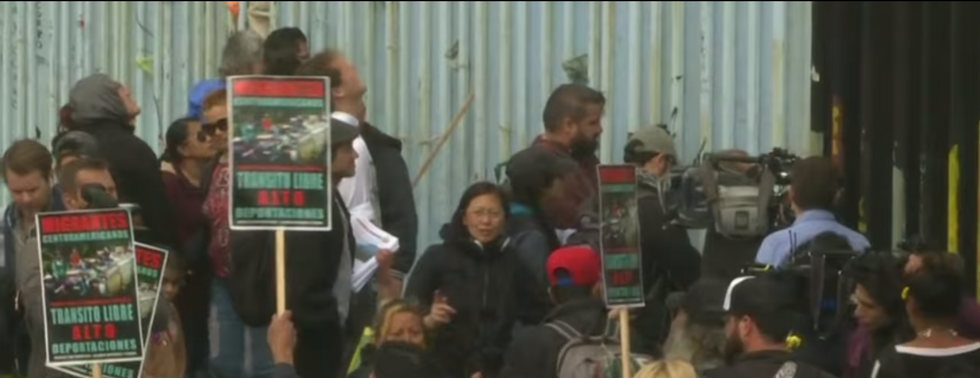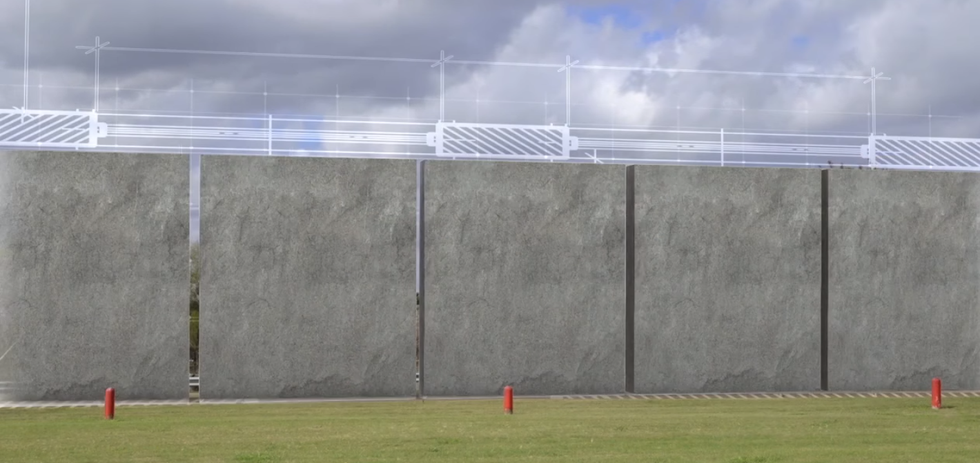After a day of waiting, the United States let in eight Central American migrants. Although this is great news, there are more than 142 other migrants waiting to be let in. Their trek was organized by transnational group, Pueblos Sin Fronteras.
The migrants finally made it to the Tijuana-San Diego Border piled in caravans on Sunday the 29.
Instead of freeing these migrants from impending danger, immigrant officials turned them away and refused to process their claims for a full 27 hours.
The whole ordeal is part of an underlying problem in El Salvador: gang culture.
Three big gangs terrorize the country: Mara Salvatrucha or MS-13, 18th Street Southerners and 18th Street Revolutionaries. One member of 18th Street Southerners, known as Santiago, claims that they exist because “there is nothing else.”
They’ve killed innocent shopkeepers, mothers and children, yet the killings are because of government failures and not theirs.
Gangs are not a small portion of the population either. In a population of 6.5 million, 500,000 El Salvadorans are involved in gangs. Gang culture is so prevalent that kids are forced to join gangs.
Many are young relatives of gang members who are coerced into crimes and killed if they don’t commit. Back in 2016, about 540 Salvadoran minors were murdered, which amounted to about 1.5 each day.
It’s no surprise El Salvador is called the murder capital of the world because of this, which fuels Trump’s Twitter rampages that the country is a drain on the United States.
Had Mr. Trump not been so ignorant, he would have realized that the United States owes it to El Salvador to fix this problem because we started it in the first place.
In fact, MS-13 was formed back in 1980s Los Angeles by refugees from El Salvador’s civil war. After learning the gang culture in the American prison system, the original MS-13 was deported to El Salvador and ultimately started a 30-year problem.
When migrants first arrived at the border, Trump took to Twitter, saying, “not to let these large Caravans of people into our Country.”
Attorney General Jeff Sessions came to the president’s defense, claiming the caravan’s arrival at the border is a “deliberate attempt to undermine our laws and overwhelm our system.”
Considering most of these migrants are parents and their children trying to escape the gang violence plaguing their safety, that is not the case.
One of the most heart-wrenching stories is that of 30-year-old Mario Quintanillo and 23-year-old Cecilia Sarai Carillo, a couple who fled from a gang that attacked Mario and killed a relative. They had just wed on April 29 and sought asylum for the sake of their 2-year-old daughter Daryeline Ariana.
Even though they know they will be separated during the asylum process, for as long as a few months, Mr. Quintanillo says he’s “going with the feeling that it’s going to be worth the effort.”
Getting asylum only starts an even longer process than what it took them to travel to the Tijuana-San Diego Border. Mothers and children will separate from fathers like Mr. Quintanillo, who will be brought to facilities holding undocumented immigrants.
It will take them days to be screened by immigration officials, which gives them the chance to plead their case to an immigration judge. This in itself takes several months or longer.
When that’s taking place, immigrants are forced to wear ankle monitors like prisoners as they stay with anyone willing to take them in.
It was not Trump who let eight of these migrants in; it was the migrant supporters, the journalists and good Samaritans alike who sat with them at the border, fighting to let them in.
One brave 16-year-old, José Cristobal Amaya, hopes for a miracle as does every migrant with an uncertain future, “I feel that God will help me cross, and will touch the president’s heart.”


















